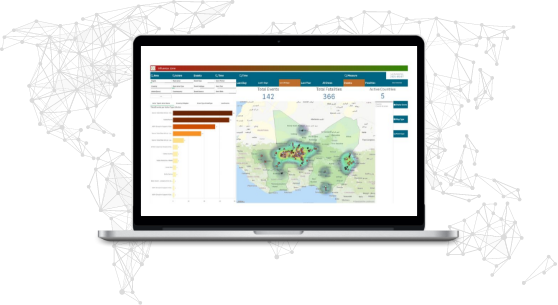Duty of care
WHY ARE SECURITY AND SAFETY SO IMPORTANT ?

Companies have a legal and ethical responsibility to inform and protect their employees (“duty of care”).
Since the beginning of the 2000, the responsibility of the company director has been reinforced by the recognition of the general obligation of safety and results towards the employees.
The legal constraints related to the international mobility of employees have progressively increased and the civil and criminal liability of employers can be engaged before the courts.
This duty of care is gradually being extended to Africa.
HISTORY OF THE "DUTY OF CARE"



Since the year 2000, various attacks or serious security incidents have given rise to jurisprudence specifying the legal obligations and responsibilities of employers :
In France, since 2004, following the Karachi jurisprudence, the employer can be condemned for breach of the safety obligation, in the context of the international mobility of its employees. The employer is now subject to a safety obligation of result with regard to the protection of its expatriate and seconded employees.
The Jolo case law (2006) obliges tour operators, like other companies, to inform employees of the risks they run when traveling internationally. The company therefore inherits the following obligation: to have a better understanding of the security situation in a country in the medium and short term, as well as the modus operandi of terrorists or criminals, in order to deduce the precautionary measures to be implemented immediately.
The Abidjan jurisprudence (2011) extends the employer’s liability and safety obligation to the private life of the employee on international travel.

In addition to these decisions, on May 1, 2008, article L4121-1 of the Labor Code came into force, which states that
the employer shall take the necessary measures to ensure the safety and protect the physical and mental health of workers
This article confirms the idea that the company is obliged to anticipate the risks to which it exposes its employees, in accordance with the principles of precaution and prevention. Otherwise, the company may be condemned by the Social Security Court for inexcusable fault.
This article confirms the idea that the company is obliged to anticipate the risks to which it exposes its employees, in accordance with the principles of precaution and prevention. Otherwise, the company may be condemned by the Social Security Court for inexcusable fault.
A POWERFUL TOOL TO ENSURE THE SAFETY OF ITS PERSONNEL
- The implementation of a reliable and efficient watch allows to anticipate the weak signals of a security instability and thus to reduce the uncertainty. This can be done at the level of a country, a region but also a province or a city.
Threat identification and assessment is also an important step in the design of a security system, as it determines the risk analysis. They consist in mapping and prioritizing security threats according to their probable incidence and their potential impact on employees in order to take the necessary measures to protect them. The next step is for security departments to propose a system adapted to the components of the threat, combining preventive protective measures with corrective or reactive measures.



how we can help you keep your business safe.
© 2023 Trigger’s Reports

